Kedves Olvasóink!
Havonta frissülő könyvajánló rovatunkkal a könyvtárunkba frissen érkezett kiadványokra szeretnénk felhívni a figyelmüket. A könyvek kölcsönözhetők, hozzáférhetőségükről az online katalógusban informálódhatnak, további felvilágosítást a könyvtárosoktól kérhetnek.
A könyvtár nyitva tartásáról és a kölcsönzés feltételeiről a könyvtár oldalán tájékozódhatnak.
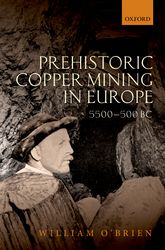
William O'Brien: Prehistoric Copper Mining in Europe: 5500-500 BC
Oxford: Oxford University Press 2015
Raktári jelzet: R-39.970/2021
Nyelv: Angol
This volume examines prehistoric copper mining in Europe, from the first use of the metal eight thousand years ago in the Balkans to its widespread adoption during the Bronze Age. The history of research is examined, as is the survival of this mining archaeology in different geological settings. There is information on the technological processes of mineral prospecting, ore extraction, and metal production, as well as the logistics and organization of this activity and its environmental impact. The analysis is broadened to consider the economic and societal context of prehistoric copper mining and the nature of the distinctive communities involved. The study is based on a review of field data and research produced over many decades by the collaboration of archaeologists and geologists in a number of different countries, and covers such famous mining centres as the Mitterberg in Austria, Kargaly in Russia, the Great Orme in Wales, and those in Cyprus, from where the name of this metal derives. These regional studies are brought together for the first time to present a remarkable story of human endeavour and innovation, which marks a new stage in the mastery of our natural resources.
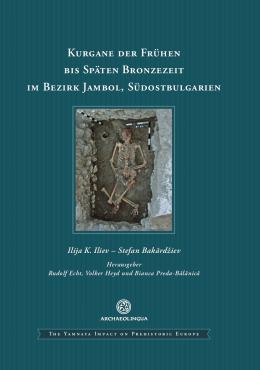
Stefan Bakărdžiev - Ilija K. Iliev: Kurgane der frühen bis späten Bronzezeit im Bezirk Jambol, Südostbulgarien.
Budapest: Archaeolingua, 2021
Sorozat: (Archaeolingua Series Maior 41; The Yamnaya Impact on Prehistoric Europe 1)
Raktári jelzet: feldolgozás alatt
Nyelv: Német
Mit diesem Band 1 der Serie ‘The Yamnaya Impact on Prehistoric Europe‘ werden die Ergebnisse der Rettungsgrabungen von Ilija Iliev und Stefan Bakărdžiev vom Historischen Museum in Jambol in fünf bronzezeitlichen Kurganen dieser Region im Südosten Bulgariens vorgestellt. Diese Kurgane nahe den Ortschaften Mogila, Draževo, Irečekovo und Bojanovo (zwei Hügel) wurden zwischen 2004 und 2010 ausgegraben. Insgesamt enthielten sie mehr als 40 bronzezeitliche Gräber, die hier ausführlich in Text, Katalog und Abbildungen beschrieben werden. Die frühesten, wie in Mogila und Bojanovo Hügel 1 vorliegend, stammen vom Ende des 4. Jahrtausends v. Chr. Die nächste Phase, von ca. 3000 bis zur Mitte des 3. Jahrtausends v. Chr. datierend, ist mit Jamnaja-Bevölkerungen verbunden. 16 ihrer typischen Gräber wurden ebenfalls in Mogila und Bojanovo Hügel 1 gefunden. Die mit Matten und Holzbalken abgedeckten Grabgruben und ihre mit Ocker bestreuten Verstorbenen in Rückenlage mit erhobenen Knien liegend, machen sie leicht erkennbar. Andere zeitgenössische Hügelbestattungen zeigen eine Mischung aus lokalen Ezero-Traditionen der bulgarischen Frühbronzezeit II und Steppenelementen, wie in Gräbern aus Draževo belegt. Später, in der mittleren und späten Bronzezeit des 2. Jahrtausends v. Chr., wurden etwa 11 Gräber als sekundäre oder tertiäre Nachbestattungen in Mogila und Bojanovo Hügel 1 eingebracht. Jedoch wurden in der Mittelbronzezeit auch weiterhin neue Hügel errichtet, wie Irečekovo und Bojanovo Hügel 3 mit jeweils drei Gräbern zeigen. Der jüngste Bestattungshorizont besteht aus christlichen Bestattungen aus der Spätantike und dem Mittelalter, die allerdings nicht mehr in diesem Buch beschrieben werden.
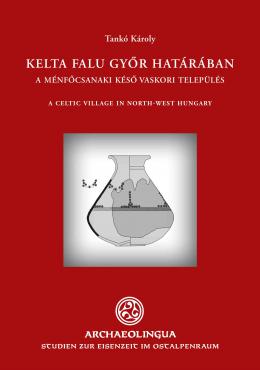
Tankó Károly: Egy kelta falu Győr határában. A ménfőcsanaki késő vaskori település – A Celtic village in North-West Hungary
Budapest: Archaeolingua, 2020
Sorozat: (Studien zur Eisenzeit im Ostalpenraum 2)
Raktári jelzet: feldolgozás alatt
Nyelv: Magyar/Angol
Ménfőcsanak a kelta vándorlás egyik kulcsfontosságú lelőhelye Győr közelében. Ez Magyarország, de talán a teljes Kárpát-medence legnagyobb felületen és legteljesebben kutatott késő vaskori települése. Közelében az azonos korú temető több száz sírja is feltárásra került, köztük olyanok is, amelyek mellékleteik alapján egyértelműen a Kr. e. 4. század első felére datálható kelta népmozgással hozhatók összefüggésbe. A lelőhely jelentősége a kelet-magyarországi Sajópetrihez mérhető; a Ménfőcsanakon napvilágra hozott leletanyag feldolgozása és elemzése jelenleg is folyik.
Ménfőcsanak near Győr is the largest excavated late Iron Age settlement complex in Hungary. Its contemporaneous cemetery has also been brought to light, featuring burials with grave goods that connect the site to the Celtic migrations in the first half of the 4th century BC. This site’s relevance is comparable to that of Sajópetri in East-Hungary, and the enormous assemblage unearthed from here is still being processed and analysed. This book presents the findings from the late Iron Age settlement excavated on Szeles Hill at Ménfőcsanak in 1993–1998, providing a comprehensive view on a rural settlement in Transdanubia in the late Iron Age. The book includes a detailed summary in English as well as English captions for the tables and images.
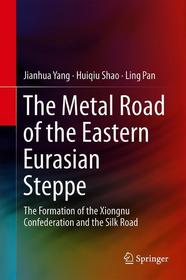
Yang, Jianhua – Shao, Huiqiu –Pan, Ling: The Metal Road of the Eastern Eurasian Steppe. The Formation of the Xiongnu Confederation and the Silk Road
Singapore: Springer 2020
Raktári jelzet: R-39.967/2021
Nyelv: Angol
This book is one of the first to systematically explore cultural interactions between the Northern Zone of China and the Eurasian Steppe, with a focus on the formation process of the Xiongnu Confederation and the Silk Road. Combining partition and staging analyses, the authors adopt a broad perspective, viewing the Northern Zone as part of the Eurasian Steppe and combining history with culture by investigating the spread of bronze artifacts. In addition, with more than three hundred figures and color photographs, it offers readers a uniquely grand panorama of two thousand years of cultural interactions between the Northern Zone of China and the Eurasian Steppe.
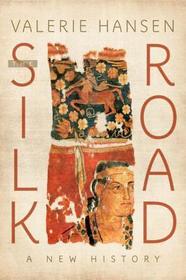
Valerie Hansen: The Silk Road. A New History
Oxford: Oxford University Press 2015
Raktári jelzet: R-39.850/2021
Nyelv: Angol
The Silk Road is as iconic in world history as the Colossus of Rhodes or the Suez Canal. But what was it, exactly? It conjures up a hazy image of a caravan of camels laden with silk on a dusty desert track, reaching from China to Rome. The reality was different?and far more interesting?as revealed in this new history.
In The Silk Road, Valerie Hansen describes the remarkable archeological finds that revolutionize our understanding of these trade routes. For centuries, key records remained hidden-sometimes deliberately buried by bureaucrats for safe keeping. But the sands of the Taklamakan Desert have revealed fascinating material, sometimes preserved by illiterate locals who recycled official documents to make insoles for shoes or garments for the dead. Hansen explores seven oases along the road, from Xi'an to Samarkand, where merchants, envoys, pilgrims, and travelers mixed in cosmopolitan communities, tolerant of religions from Buddhism to Zoroastrianism. There was no single, continuous road, but a chain of markets that traded between east and west. China and the Roman Empire had very little direct trade. China's main partners were the peoples of modern-day Iran, whose tombs in China reveal much about their Zoroastrian beliefs. Silk was not the most important good on the road; paper, invented in China before Julius Caesar was born, had a bigger impact in Europe, while metals, spices, and glass were just as important as silk. Perhaps most significant of all was the road's transmission of ideas, technologies, and artistic motifs. The Silk Road is a fascinating story of archeological discovery, cultural transmission, and the intricate chains across Central Asia and China.
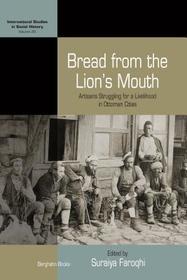
Faroqhi, Suraiya (ed.): Bread from the Lion's Mouth: Artisans Struggling for a Livelihood in Ottoman Cities
New York – Oxford: Berghahn Books 2015
Sorozat: (International Studies in Social History 25)
Raktári jelzet: feldolgozás alatt
Nyelv: Angol
The newly awakened interest in the lives of craftspeople in Turkey is highlighted in this collection, which uses archival documents to follow Ottoman artisans from the late 15th century to the beginning of the 20th. The authors examine historical changes in the lives of artisans, focusing on the craft organizations (or guilds) that underwent substantial changes over the centuries. The guilds transformed and eventually dissolved as they were increasingly co-opted by modernization and state-building projects, and by the movement of manufacturing to the countryside. In consequence by the 20th century, many artisans had to confront the forces of capitalism and world trade without significant protection, just as the Ottoman Empire was itself in the process of dissolution.
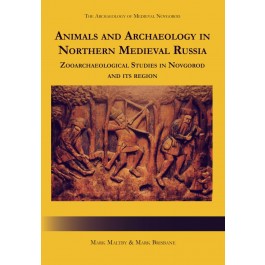
Mark Malltby – Mark Brisbane (eds): Animals and Archaeology in Northern Medieval Russia: Zooarchaeological Studies in Novgorod and its Region
Oxford, Philadelphia, Oxbow Books 2020
Sorozat: (The Archaeology of Medieval Novgorod)
Raktári jelzet: R-39.972/2021
Nyelv: Angol
This is the third book on material studies in this series on medieval Novgorod and its territory, and deals with a substantial body of animal bones that has been recovered over the last decade. The zooarchaeological evidence is discussed by the editor and a number of other British and Russian specialists looking at the remains of mammals, birds and fish. Topics discussed include diet, butchery practices, the exploitation of fur and skins, mortality patterns of mammals, and metrical analyses of a wide range of species. Detailed data sets are provided to enable the reader to make comparisons with their own research, but the book is also suitable for those with a more general interest in medieval Russian archaeology.
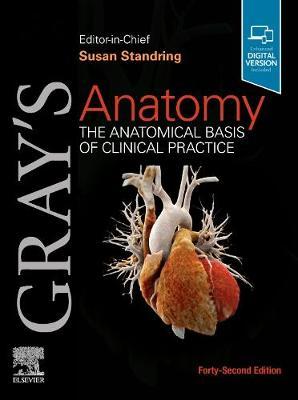
Susan Standring ed.): Gray's Anatomy. The Anatomical Basis of Clinical Practice
Amsterdam, Elsevier 2020
Sorozat: (Gray's Anatomy 42)
Raktári jelzet: R-39.971/2021
Nyelv: Angol
In 1858, Drs Henry Gray and Henry Vandyke Carter created a book for their surgical colleagues that established an enduring standard among anatomical texts. After more than 160 years of continuous publication, Gray’s Anatomy remains the definitive, comprehensive reference on the subject, offering ready access to the information you need to ensure safe, effective practice.
This 42nd edition has been meticulously revised and updated throughout, reflecting the very latest understanding of clinical anatomy from the world’s leading clinicians and biomedical scientists. The book’s acclaimed, lavish art programme and clear text has been further enhanced, while major advances in imaging techniques and the new insights they bring are fully captured in state of the art X-ray, CT, MR and ultrasonic images.




